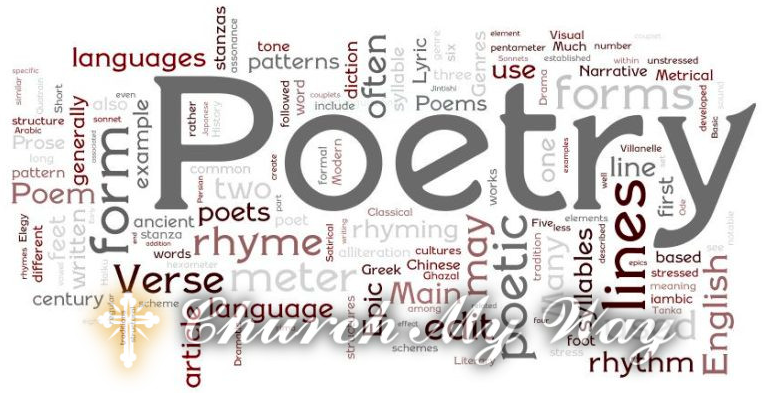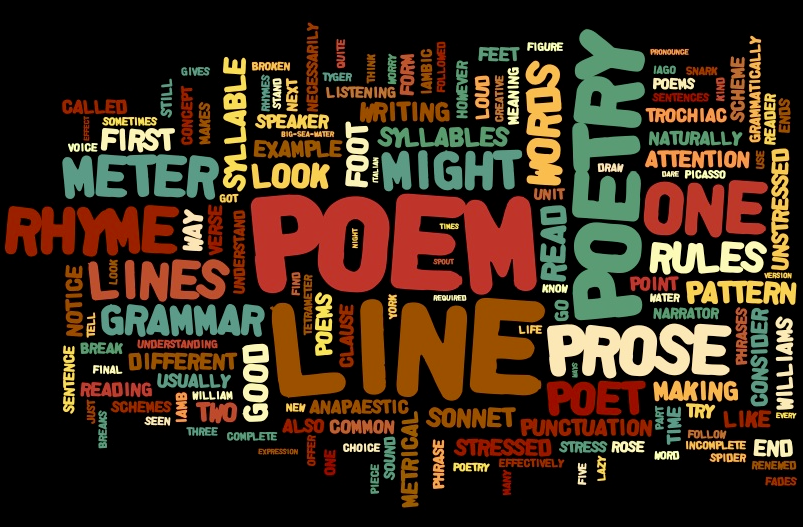Poetry can evoke emotions, paint vivid pictures, and capture the essence of the human experience. It is a form of creative term that allows us to delve deep into feelings, thoughts, and observations. Whether you’re a seasoned poet or just starting your poetic journey, this article will guide you through writing captivating and impactful poetry.
Understanding the Power of Poetry
Poetry holds a unique place in literature and human culture. It can transcend boundaries, break barriers, and connect people profoundly. Let’s explore why it is such a powerful medium of expression.
The Expression of Emotions
Poetry is a channel through which we can express our deepest emotions. It gives us the freedom to articulate feelings that may be difficult to express in ordinary language. Through carefully chosen words and metaphors, the poem enables us to capture the nuances and complexities of emotions, whether joy, sorrow, love, or longing.
Evoking Empathy and Connection
One of the remarkable aspects of poetry is its ability to evoke empathy and foster a connection between the poet and the reader. By sharing personal experiences, thoughts, and perspectives, poets create a bridge that allows readers to relate to their words. It can make us feel understood, comforted, and less alone in our experiences.
Getting Started with Writing Poetry
If you’re new to poetry or seeking inspiration to enhance your craft, here are some steps to help you get started:
Finding Inspiration
Inspiration can come from various sources: nature, relationships, personal experiences, or even abstract concepts. Pay attention to the world, observe the little details, and reflect on your emotions. Inspiration can strike any moment, so keep a journal handy to jot down your thoughts and observations.

Choosing a Theme or Subject
Once you have found inspiration, consider the theme or subject you want to explore in your poem. It could be a particular emotion, a
significant event, a place, or a person in your life. The theme will give your poem a focus and help guide your words. Think about what resonates with you emotionally and choose a topic that will let you convey your feelings effectively.
Exploring Different Poetry Forms
Poetry comes in various forms, each with its unique structure and rules. Here are some popular poem forms to explore:
Free Verse
Free verse is characterized by its lack of strict rhyme or meter. It allows poets to experiment with line breaks, rhythm, and word choice. This form allows you to focus on the emotional impact of your words without the constraints of traditional structure.
Rhyme and Meter
Rhyme and meter are common elements in poetry. Rhyme refers to repeating similar sounds at the end of lines. In contrast, meter refers to the rhythmic pattern of stressed and unstressed syllables. Utilizing rhyme and meter can add musicality and enhance the emotional impact of your poem.
Haiku and Tanka
Haiku and tanka are traditional Japanese poetry forms known for their brevity and focus on nature. Haiku consists of three lines with a 5-7-5 syllable pattern, while tanka has five lines with a 5-7-5-7-7. These forms can convey fleeting moments, evoke emotions, and create vivid imagery.
Sonnet
The sonnet is a 14-line poem that follows a specific rhyme scheme and structure. It traditionally explores themes of love, beauty, and mortality. Sonnets can be challenging to write but offer a structured framework for expressing deep emotions and contemplations.
Crafting Engaging Poetic Language
The language you choose in your poetry is crucial in creating a powerful and emotional impact. Here are some techniques to consider:
Imagery and Sensory Details
Use vivid imagery and sensory details to paint a vivid picture in the reader’s mind. Engage their senses by incorporating sight, sound, taste, touch, and smell. This will help immerse the reader in the emotions and experiences you wish to convey.
Metaphors and Similes
Metaphors and similes allow you to make robust comparisons and create associations between ideas or objects. They can evoke strong emotions and add depth to your poetry. Experiment with imaginative and unexpected comparisons to make your writing more engaging.
Personification
Personification involves attributing human qualities to non-human entities or abstract concepts. Giving life to inanimate objects or ideas can add emotional depth and create a sense of connection between the reader and your poem.
Alliteration and Assonance
Alliteration is the repetition of consonant sounds, while assonance is the repetition of vowel sounds. These techniques can create a pleasing musicality in your poetry. They can also emphasize certain words or phrases, evoking a specific emotion or rhythm.
Creating a Poetic Structure
The structure of your poem contributes to its overall impact and flow. Consider the following elements when crafting the structure:
Stanza and Line Breaks
Stanzas are the poetic equivalent of paragraphs. They help organize your thoughts and create visual breaks in the poem. Experiment with different stanza lengths and arrangements to find the structure that best complements your poem’s emotional tone and content.
Enjambment and Caesura
Enjambment refers to the continuation of a sentence or thought from one line to the next without a grammatical pause. On the other hand, Caesura is a deliberate pause or break within a line. Utilizing enjambment and Caesura can add rhythm and emphasis to
your words, enhancing the emotional impact of your poem. Experiment with different placements of enjambment and Caesura to create the desired effect.
Repetition and Refrain
Repetition involves using the exact words or phrases multiple times within a poem. It can create a sense of rhythm, emphasis, and emotional resonance. A refrain is a repeated line or stanza that appears regularly throughout the poem, providing a consistent anchor and reinforcing the poem’s central theme or emotion.
Conveying Emotions in Poetry
Emotions are at the heart of poetry. Here are some techniques to effectively convey and evoke emotions in your poems:
Tone and Mood
The tone and mood of your poem set the emotional atmosphere for the reader. Choose words, imagery, and overall language to create the desired emotional response. Experiment with different tones, such as sad, hopeful, or passionate, to elicit specific emotions from your readers.
Symbolism
Symbolism allows you to represent abstract ideas or emotions through concrete images. By using symbols, you can deepen the emotional impact of your poetry. Consider incorporating objects, colors, or natural elements that carry emotional significance and resonate with your intended meaning.
Sound and Rhythm
The sounds and rhythms in poetry can elicit strong emotional responses. Pay attention to the musicality of your words and the overall flow of your poem. Experiment with poetic devices, such as alliteration, onomatopoeia, or varied line lengths, to create a unique sonic experience that enhances the emotional impact.
Polishing Your Poetry
Writing poetry is a journey of continuous refinement. Here are some tips for polishing your work:
Editing and Revising
After writing your initial draft:
- Take a moment to review and modify your poem.
- Look for opportunities to tighten your language, refine your imagery, and enhance the emotional resonance.
- Consider your poem’s pacing, structure, and overall flow, ensuring that each word contributes to its impact.
Seeking Feedback
Share your poetry with trusted friends, fellow poets, or writing groups. Constructive feedback can offer valuable insights and perspectives. Listen to suggestions while staying true to your artistic vision. Remember that feedback is subjective, and ultimately, the final decisions are yours.
Experimenting with Different Approaches
Feel free to leave your old style and write a new technique, form, or theme. Poetry is an ever-evolving art, and experimenting with different approaches can help you discover new avenues for emotional expression. Embrace the unknown and trust your intuition.
Overcoming Writer’s Block in Poetry
Writer’s block can be a frustrating obstacle in the poetic process. Here are some strategies to overcome it:
Exploring Prompts and Exercises
Engage in writing prompts, exercises, or challenges to stimulate your creativity. These activities can provide a starting point and help break through the initial resistance. Write freely without judgment, allowing your emotions to flow onto the page.
Embracing Vulnerability and Authenticity
Poetry thrives on authenticity and vulnerability. Tap into your own experiences, emotions, and unique perspective. Be bold in exploring more profound, more personal themes. By embracing vulnerability, you invite your readers to connect with your words on a profoundly emotional level.
Taking Breaks and Seeking Inspiration
Sometimes, stepping away from your writing can recharge your creative energies. Take breaks, and engage in activities that inspire you, such as reading other poets’ work, immersing yourself in nature, or experiencing art in various forms. Inspiration will come in the most random places.
Sharing Your Poetry with Others
Sharing your poetry with others is a courageous and rewarding step. Here are some ways to share your work:
Building a Poetry Community
Connect with fellow poets and join communities where you can discuss your writing, receive feedback, and discuss it. Online platforms, local groups, or open mic nights provide opportunities to connect with like-minded individuals who appreciate and understand the emotional power. Building a supportive community can inspire and motivate you to continue honing your craft.
Performing and Publishing
Consider performing your poem at open mic events or spoken word nights. Performing allows you to share your words directly with an audience, infusing them with the emotions and passion behind your work. To reach a wider audience, explore publishing options such as literary magazines, poetry anthologies, or even self-publishing. Sharing your poem in print or digital formats can extend its reach and touch readers’ lives worldwide.
Conclusion
Writing a poem is a deeply personal and emotionally rewarding endeavor. Through the power of language, imagery, and structure, you can create a tapestry of emotions that resonates with readers profoundly. Embrace the freedom and vulnerability that poetry offers, and let your words become a vessel for the depths of your heart and soul. Remember that a poet’s journey is one of continual growth, exploration, and connection.
FAQs
Can anyone become a poet?
- Absolutely! Poetry is a form of self-expression that anyone can explore. All you need is to dive into your emotions and find your unique voice.
How long does it take to finish writing a poem?
- The time it takes to write poetry varies from person to person and from poem to poem. Some poetry may flow effortlessly, while others require more time and revision. Embrace the process and allow yourself to create at your own pace.
Do I need to follow all the traditional rules of poetry?
- While understanding standard poetry rules can be helpful, they are not essential. Modern poetry embraces experimentation and breaking conventions. Focus on expressing your emotions and creating an emotional impact rather than adhering strictly to rules.
Can poetry help in healing emotional pain?
- Yes, poetry can be a powerful tool for healing emotional pain. It provides an outlet for expressing and processing complex emotions, allowing for catharsis and self-reflection. It can also offer solace and connection when shared with others.
How do I find my unique poetic voice?
- Finding your poetic voice is a journey of self-discovery. Read widely, explore different styles and themes, and write from your heart. Embrace your personal experiences, perspectives, and emotions. Your unique voice will emerge with time and practice, shaped by your authentic expression.
